'Push' factor drives migrants away from Libya to Europe
- Published
The BBC gained special access to the M.V. Aquarius which is charged with rescuing migrants making the dangerous journey from Libya to Europe
It is a fool's game trying to cross the Mediterranean in a rubber boat - even as summer beckons, the days are longer and the weather supposedly improves.
Forget the mental image you might have from seaside holidays of an azure sea whose rippling waves beckon you in for a cooling dip.
I joined a migrant rescue mission out on the Mediterranean last week in the Aquarius, a search-and-rescue vessel nearly 77m long.
And it shuddered and groaned from bow to stern as it thrashed through the 3.5m swells that suddenly whip up in these treacherous waters.
So pity the plight of thousands of migrants setting out in a flimsy inflatable, most of whom are unable to swim and are weak from standing up for 10 hours on their perilous voyages.
Deaths at sea have risen ninefold since October 2014, according to the International Organization for Migration (IOM) charity.
And yet in the first three months of this year, 18,000 migrants attempted the crossing from Libya, external - 8,000 more than in the same period last year.
The untold story of Europe's drowned migrants
Migration to Europe explained in seven charts
Europe's migrant story enters new phase
So why do they still come?
Is it the "pull factor" - are the migrants "pulled" in the direction of Europe by the belief they will be picked up by rescue missions like the one I joined?
Or is there, in fact, an even stronger "push factor"? Are the migrants being pushed out of countries such as Libya by living conditions so horrific that even the possibility of drowning at sea seems preferable?
Drowning no deterrent
What is certain is that those European politicians who thought the stories and images of people drowning would serve as a deterrent to others were wrong.
There are estimated to be some three million migrants and refugees in Libya. And a third of them - mostly from Somalia, Sudan and Eritrea - are believed to be waiting and working towards their passage to Europe.
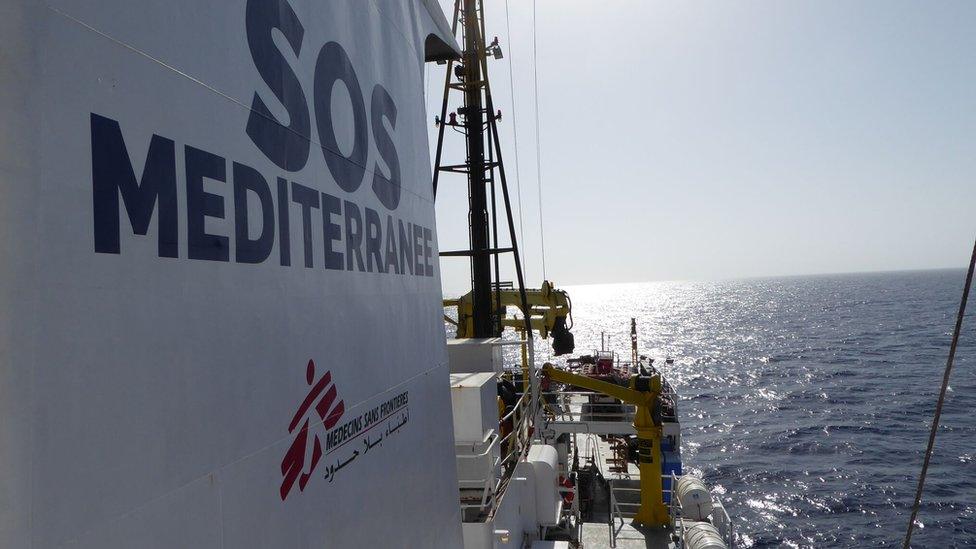
The Aquarius has rescued more than 1,500 people since February
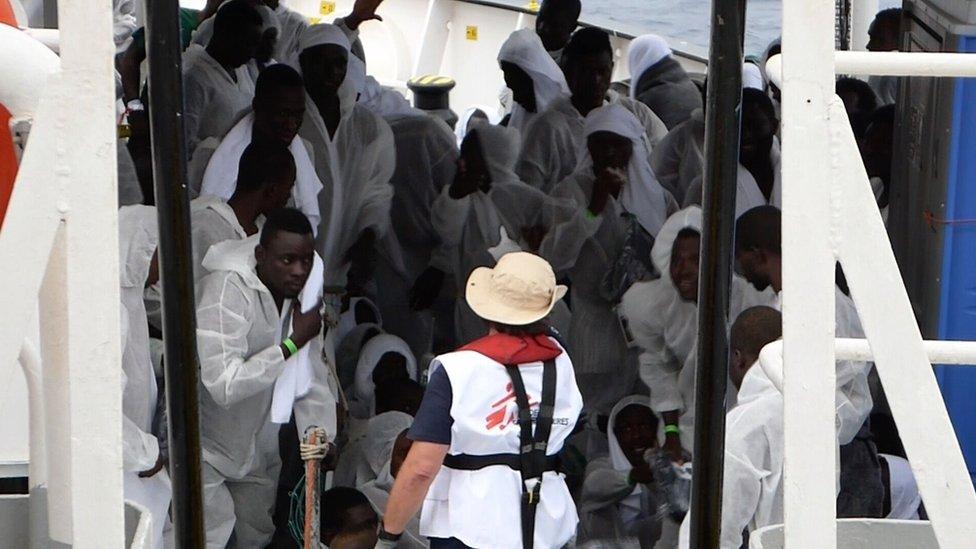
Many migrants are prepared to risk all to get away from Libya
In the past three years, there have been two major European-led search-and-rescue programmes in the Mediterranean.
The first, Mare Nostrum, was run by the Italian navy and was hugely successful, saving about 100,000 lives in little over a year. Yet 18 months ago, the Italians abandoned the operation.
It was expensive and, in Europe, politically unpopular. A number of European leaders thought Mare Nostrum was exacerbating the problem of migrant voyages.
The people smugglers knew the ships were there; they knew the Italian navy would come to the rescue of their desperate cargoes.
Mare Nostrum was just too successful: perhaps - said some - it represented the "pull factor".
The focus of Operation Triton, which replaced it, was much narrower in scope. While still Italian-led, the lifesaving vessels supposedly stay closer to Italian shores. And consequently the risk of drowning has grown.
Yet still the migrants come. More than 500 have been picked up by Aquarius alone in the past seven days. Many boats sink without anyone knowing, as the bodies washing up on Libyan beaches attest.
Is it time, therefore, to look at the "push" factor?
The BBC's Christian Fraser reports from the Mediterranean, where rescued migrants are lined up aboard an Italian war ship
Xenophobia and lawlessness
Libya is a country in ruins, dangerous for everyone. But it is especially dangerous if you are a black man, partly owing to deep-seated racist attitudes among the Libyan people.
The migrants, whether they are from the Horn of Africa or West Africa, are in the grip of the people smugglers who pick them up as soon as they leave their countries of origin and "usher" them through the Sahara. There is only one destination: Libya.
But it's not the gateway many believe it to be. The chaos and lawlessness in Libya feed the xenophobia. On Aquarius last week, I heard similar stories, time and again, of migrants and refugees murdered, exploited, forced to work without pay, robbed in their homes or in the streets.
And some of the worst places are the government-run detention centres for migrants.
Human Rights Watch has taken scores of testimonies that tell of whippings, electric shocks, beatings, strip-searches, "people being hung upside down from the trees".
The centres - run by Libya's interior ministry - are severely overcrowded. And often the day-to-day operations of these prisons are contracted out to the militias, who are in cahoots with the people smugglers.
On board Aquarius, I met Ansumana Badjie, 20, from Gambia.
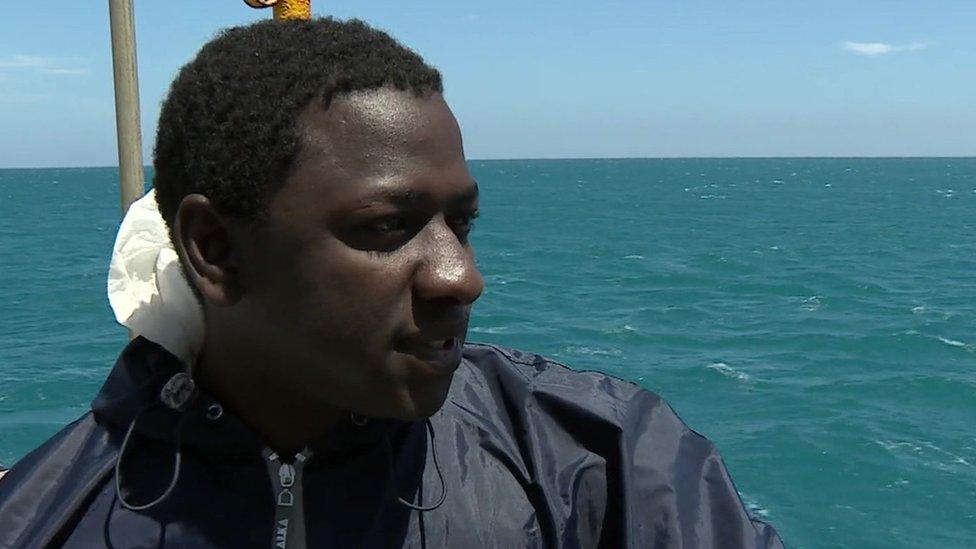
Ansumana Badjie was kidnapped from his home
He had spent several weeks in one of these notorious centres. He had been working in Libya, trying to earn enough money for his sea crossing, but was kidnapped from his home, and imprisoned. His only crime, it seemed, was being black.
"We were given just one meal a day," he told me. "It was horrendous, we were beaten, there were no showers. There were people who disappeared. Even if I had wanted to go home, there was no way out."
Eventually he did escape, in a breakout. How he found his way to the beach was not entirely clear. But seemingly he was kept in a cavernous "hole" dug into the sand on the beach for days. "We slept in the hole, we peed in the hole,'' he said.
And when it came to the day of departure?
"Oh my God!" he exclaimed. "The boat! But there was no choice. No-one in his right mind would get in that rubber boat with 110 people. But with a gun at your back? It was the only choice I had."
"The gun in the back" - the push factor.
Forced into boat
Others - some barely into their teens - had experienced similar torture.
Zach, 13, from Ivory Coast, told me he too had been forced into the boat.
"You die or you survive," he said. "They would have shot me there on the beach. I have no parents, my brother drowned on this sea last year. And Libya? Libya was hell on earth. So why not?"
Last week, the IOM invited diplomats from Senegal, Cote d'Ivoire, Mali, Guinea Conakry, Ghana, Nigeria, Niger and Gambia to visit these Libyan detention centres. They went to the Al Garabulli centre, east of Tripoli.
The visitors met 315 West Africans there, of whom 202 expressed an interest in going back voluntarily to their countries of origin. At another centre, Abu Salim, 370 out of 450 West African migrants said they would go home.
But many of these migrants and refugees have had their passports stolen or confiscated by smugglers, criminal gangs or even their Libyan employers. The truth is that they have no means of escape.
Too often the boats are the only way out.
And not a seaworthy boat but a rubber boat; a boat with barely enough fuel to travel 12 miles to international waters, a boat with 110 people on board, standing room only.
There is more than a 50/50 chance you are going to drown.
So if that is the best decision, if that is the rational decision, how bad were their lives in their home countries? And how bad must Libya be for black Africans?
- Published13 May 2016
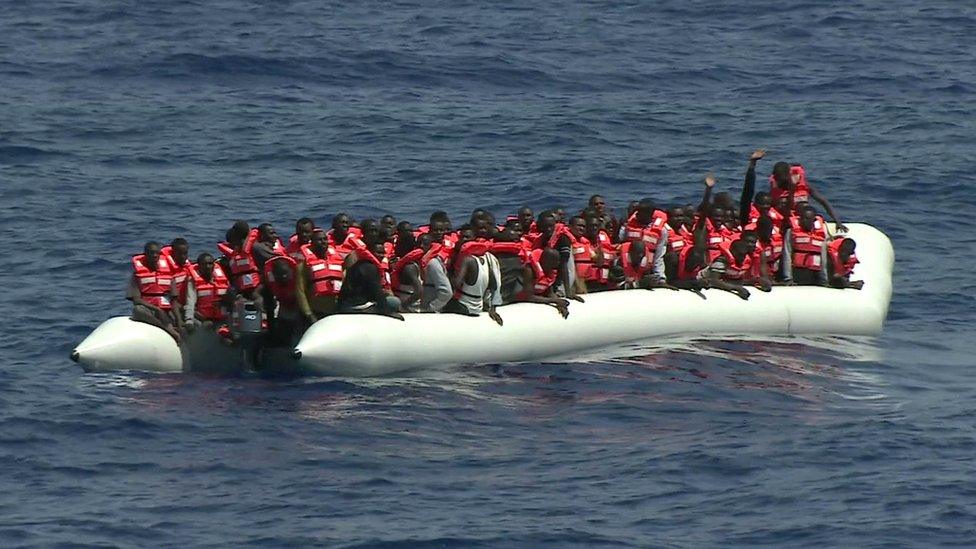
- Published12 May 2016
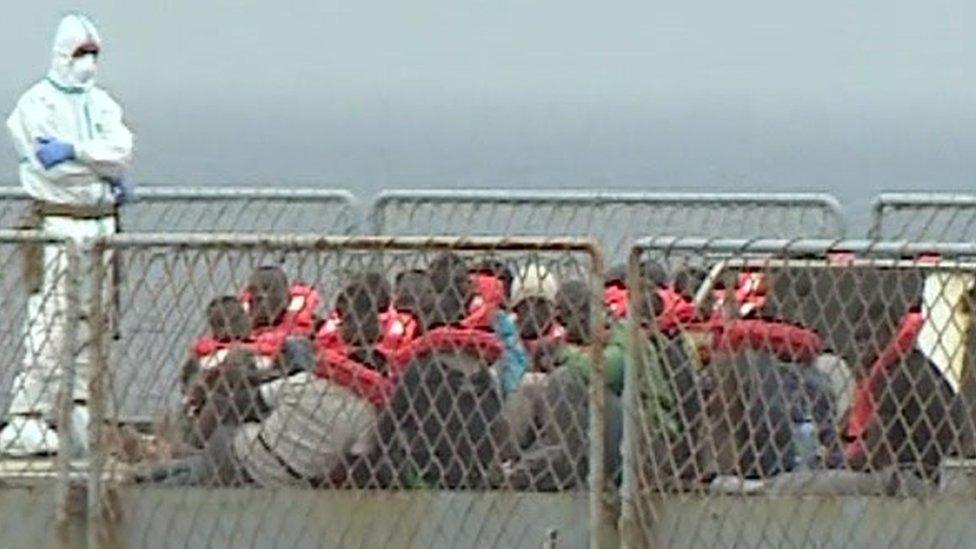
- Published13 May 2016
